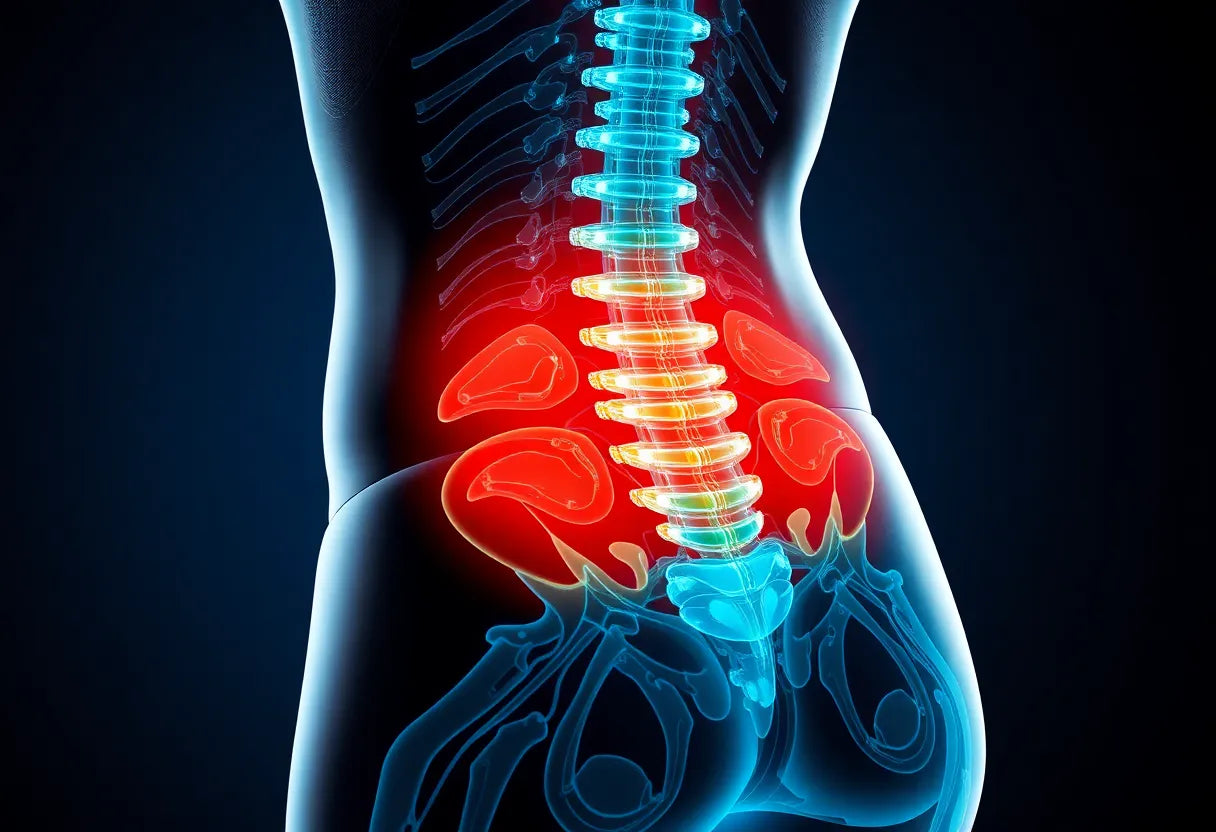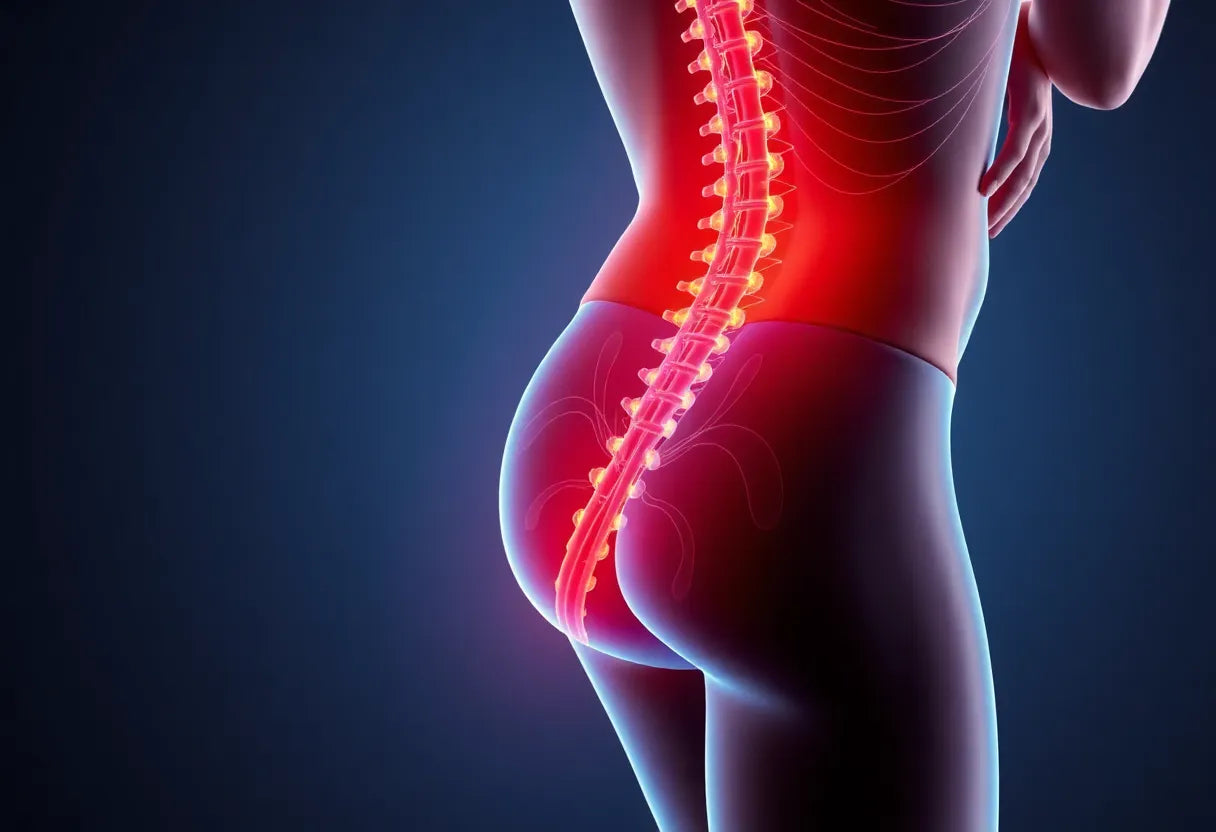Imagine a bustling highway where information flows seamlessly, ensuring that every part of the city stays connected and functional. This is akin to the role spinal cord nerves play in the human body. These nerves are the vital communication highways that transmit motor, sensory, and autonomic signals, essential for our daily activities and overall well-being. Without them, our bodies would be unable to perform even the simplest tasks, from moving our limbs to sensing temperature changes.
the significance of spinal cord nerves
Understanding spinal cord nerves is not just an academic exercise; it has real-world implications for millions of people who experience back and nerve-related pain. This type of pain is incredibly common and can significantly impact one's quality of life, affecting everything from mobility to sleep quality. By gaining a deeper understanding of how spinal nerves function, individuals can better manage their pain and explore ergonomic solutions that may offer relief.

Men's Posture Shirt™ - Black
Støtter kroppen, aktiverer muskler og hjælper med at lindre spændinger og smerter i ryg og nakke.
Spinal nerves are mixed peripheral nerves that emerge from the spinal cord. They are responsible for carrying motor signals, which control muscle movements, sensory signals, which inform the brain about environmental changes, and autonomic signals, which regulate involuntary functions like heart rate and digestion. Each spinal nerve is a critical player in the body's communication network, ensuring that commands from the brain reach the appropriate muscles and that sensory information is relayed back to the brain for processing.
what to expect from this blog post
This blog post will take you on a journey through the fascinating world of spinal cord nerves. We will delve into their anatomy and explore how they are organized and categorized. You'll learn about the clinical significance of these nerves and how this knowledge can be leveraged to alleviate pain and improve your quality of life. Whether you're dealing with nerve-related pain or you're simply curious about how your body works, understanding spinal cord nerves is a crucial step towards better health and wellness.
anatomy of spinal cord nerves
The spinal cord nerves are a marvel of biological engineering, consisting of 31 pairs that serve as crucial links between the brain and the rest of the body. Formed by the convergence of dorsal (sensory) and ventral (motor) roots, these nerves exit the spinal column through openings known as intervertebral foramina. This precise organization allows them to efficiently relay sensory information to the brain and motor commands to the muscles, ensuring our bodies respond appropriately to internal and external stimuli.
Spinal nerves are categorized based on their location along the vertebral column: 8 cervical, 12 thoracic, 5 lumbar, 5 sacral, and 1 coccygeal pair. Each category of nerves is strategically positioned to manage and control specific body functions. For instance, cervical nerves are primarily responsible for controlling the neck and arms, while lumbar nerves govern the legs and lower body. This segmentation ensures that every part of the body receives the necessary signals for optimal functioning.
functionality and pathways of spinal nerves
The functionality of spinal nerves extends beyond basic sensory and motor tasks. These nerves are integral to the body's complex network of nerve plexuses, which include the cervical, brachial, lumbar, and sacral plexuses. These plexuses are clusters of intersecting nerves that branch out to control various regions of the body, providing a sophisticated system of communication and control.
For instance, the brachial plexus is responsible for innervating the arms and hands, allowing for the intricate movements required for daily tasks. Meanwhile, the lumbar and sacral plexuses manage the legs and pelvic region, crucial for mobility and balance. This intricate network ensures that sensory signals are accurately relayed to the spinal cord and brain, and that motor commands are effectively transmitted to the muscles.
spinal nerve regions and their functions
| Region | Nerve Range | Main Functions |
|---|---|---|
| Cervical | C1–C8 | Neck, arms, diaphragm, upper back |
| Thoracic | T1–T12 | Chest, abdominal muscles |
| Lumbar | L1–L5 | Legs, lower body |
| Sacral | S1–S5 | Pelvis, back of the legs |
| Coccygeal | CO1 | Tailbone region |
clinical relevance of spinal nerves
The clinical significance of understanding spinal cord nerves cannot be overstated, especially when considering conditions such as nerve root compression, which can lead to debilitating symptoms like pain, numbness, and muscle weakness. These symptoms can severely impact daily activities and overall quality of life. By understanding the anatomy and function of spinal nerves, healthcare professionals can develop more effective treatment plans for conditions affecting these nerves.
For instance, recognizing the specific nerve roots involved in a patient's symptoms can guide targeted interventions, such as physical therapy, medications, or even surgical options. Moreover, this knowledge aids in preventive measures, emphasizing the importance of ergonomic solutions to reduce the risk of nerve compression and associated pain. By integrating this understanding into daily life, individuals can take proactive steps to protect their spinal nerve health, ultimately leading to improved pain management and enhanced well-being.
impact of spinal nerve disorders on daily life
Spinal nerve disorders can significantly impair daily activities, affecting everything from mobility to the ability to perform routine tasks. Conditions such as herniated discs, sciatica, and spinal stenosis can lead to chronic pain, muscle weakness, and even loss of function in certain body parts. This can make simple actions like walking, lifting objects, or even sitting for extended periods challenging.
Rehabilitation plays a critical role in managing these disorders. Through targeted physical therapy, individuals can regain strength, improve flexibility, and enhance their overall quality of life. Rehabilitation programs are often tailored to address the specific nerves affected, focusing on exercises that promote healing and prevent further injury.
ergonomic interventions for spinal nerve health
Ergonomic interventions are essential in preventing spinal nerve compression and alleviating pain. By optimizing the work and home environments, individuals can reduce the risk of nerve-related issues. For instance, using ergonomic chairs and desks can help maintain proper posture, reducing strain on the spine and nerves.

Lumbar support belt
Støtter og stabiliserer lænden, ideel til lindring af rygsmerter i dagligdagen.
Additionally, incorporating regular breaks and stretching exercises into daily routines can prevent the buildup of tension in the back and neck. These simple changes can significantly impact spinal nerve health, minimizing discomfort and promoting long-term well-being.
visual aids for understanding spinal nerves
Visual aids, such as diagrams and infographics, can greatly enhance the understanding of spinal nerve anatomy and function. Diagrams illustrating the spinal cord segments and nerve pathways provide a clear picture of how these nerves operate and interact with different body regions.
Region-based tables and infographics can also be useful in highlighting the connection between spinal nerves and their corresponding body functions. These visual tools can simplify complex information, making it more accessible to readers seeking to understand the intricacies of spinal nerve health.
frequently asked questions
What symptoms indicate a spinal nerve problem?
Symptoms of a spinal nerve problem can include localized or radiating pain, numbness, tingling, or muscle weakness in the affected areas. These symptoms may vary depending on the specific nerves involved and the severity of the condition.
How can ergonomic changes help with nerve pain?
Ergonomic changes can alleviate pressure on nerves, improve posture, and reduce strain. By adjusting the work environment and incorporating ergonomic furniture, individuals can minimize pain and discomfort associated with nerve compression.
What are the most common spinal nerve injuries?
Common spinal nerve injuries include herniated discs, sciatica, and spinal stenosis. These conditions often result from poor posture, repetitive strain, or trauma, and can lead to significant pain and functional limitations.
Can lifestyle changes impact spinal nerve health?
Yes, lifestyle changes can significantly impact spinal nerve health. Maintaining a healthy weight, engaging in regular exercise, and practicing good posture are crucial steps in supporting spinal nerve function and preventing related disorders.
Källor
- Simply Psychology. "Spinal Nerves Anatomy."
- NCBI. "Spinal Nerve Anatomy."
- Kenhub. "Spinal Nerves."
- Cleveland Clinic. "Spinal Cord."
- Physio-pedia. "Spinal Nerves."
- YouTube. "Spinal Nerves Explained."
- American Association of Neurological Surgeons. "Anatomy of the Spine and Peripheral Nervous System."
- Total Community Care. "Spinal Nerves: What They Are and What They Do."
- University of Texas. "Neuroscience Online: Spinal Nerves."


















